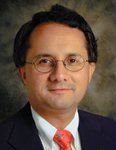Editorial: Who will follow in our footsteps?
As I write this I am post-call, which may account for the tone of my meandering discourse. At my age, the problem is not so much taking call but surviving the next day. While tackling clinical challenges can be exciting, what I find most stimulating is the chance to teach and learn from my residents.

This night shift had its share of excitement, including a successful stat cesarean on a morbidly obese patient who rolled onto Labor & Delivery with a floating vertex, bulging membranes, and deep, prolonged variable decelerations. The next case was a medically complicated patient with a troublesome fetal heart rate tracing who required multiple interventions but ultimately had a normal, spontaneous vaginal delivery. The cases were perfectly timed, as usual, to obviate any opportunity for sleep.
This morning my office hours, as they always are following in-house call, were jam-packed with complicated consults, ultrasounds, and procedures. As an academic, my days also include medical school and hospital administrative meetings, faculty recruitment and retention, lab meetings, and countless e-mails, each of which requires me to at least be sentient, if not downright perky. By the time I get home, I am physically drained, which is right about where I am now as I type these words.
The numbers speak for themselves. According to the National Resident Matching Program's 2005 statistics, ob/gyn residency positions have fallen from 5.5% of total residency slots in 1999 to 5.3% of slots this year. More ominously, the percentage of ob/gyn 1st-year residency positions taken by US medical school seniors has fallen 20% in the past decade from 84.9% in 1995 to 65.1% last year. While this year did see a modest 2.4% increase in US seniors seeking ob/gyn residencies, nearly 12% of programs did not fill, and many outstanding programs went far further down on their match list than in past years. There are anecdotal reports that the average United States Medical Licensing Exam Part 2 board scores of incoming residents have fallen in the past few years and that the number of applicants who were elected to Alpha Omega Alpha has likewise declined. Unfortunately, these records are not available through any of the major accrediting agencies including the American Board of Obstetrics and Gynecology, the American Board of Medical Specialties, National Board of Medical Examiners, or the Federation of State Medical Societies.
While we can only speculate on the cause of this decline in applications to ob/gyn residencies by US medical school seniors, it seems obvious that the professional liability crisis has taken an enormous toll. According to the American College of Obstetricians and Gynecologists, in 2003, around 50% of fellows reported at least one malpractice suit in the prior 4 years, and 76% said they had been sued once, 57% more than once, and 42% more than twice during their careers. In fact, the average ob/gyn is now sued about three times during his/her career. In states without tort reforms, the size of jury verdicts in obstetric cases continues to skyrocket, as does the price of settlements. This suggests that plaintiff attorneys have become far more efficient in plying their craft. Indeed, a lawyer friend of mine-yes, I have lawyer friends-recently showed me an advertisement for a plaintiff attorney conference featuring lectures by a number of well-known "professional" ob/gyn expert witnesses. The reality is that many of these "experts" do not stay up nights (or days) delivering babies, do not conduct research or craft textbooks, and wouldn't be deemed qualified to teach medical students, but they are very helpful in fine-tuning plaintiff attorney tactics. My colleagues tell me that some of the new techniques being used by plaintiff attorneys include:
